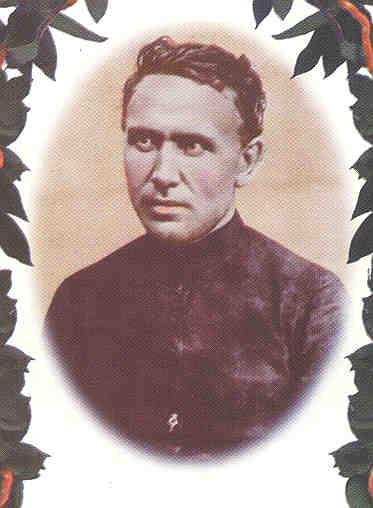We Lepers
By Sr. Georgina Delgado op
Blessed Damien De Veuster, SS.CC.
Born : January 3, 1840
Died : April 15, 1889
Feast Day : May 10

Since I first came here to Hawaii in 1982, I have been keeping this secret desire in my heart to see Father Damien’s grave and the place were he demonstrated the greatest act of love. My opportunity came when hundreds of people from other islands, the mainland and even Europe gathered in Molokai to celebrate the interment of Blessed Damien’s relics. But first let me tell you about Blessed Damien.
Damien De Veuster, a young Belgian priest, had served nine years as a missioner in the Hawaiian Islands when he felt called to request a perilous assignment. He asked his superiors that he be allowed to serve on the island of Molokai, the notorious leper colony.
Westerners had arrived in the Hawaiian Islands only late in the eighteenth century, finding a native population of about three hundred thousand. Within a hundred years the ravages of disease had reduce this number to fifty thousand. Among many illnesses, the most dreaded scourge was leprosy. The first case appeared only on 1840, but within thirty years it had reached epidemic proportions. Helpless to control its spread and unable at that time to offer any remedy, the authorities responded in 1868 by establishing a leper settlement on the remote and inaccessible island of Molokai. By law, Hawaiians found to be suffering from the disease were snatched by force from their families and communities and sent to this island exile to perish.
Conditions on the island were horrific. Patients were literally dumped in the surf and left to make their way ashore, seek shelter in caves or squalid shacks, and cling to life as best they could, beyond the pale of any civil or moral law.
It was to this island that Father Damien was assigned. Form the beginning he sought to instill in the members of his ‘parish’ a sense of self-worth and dignity. His first task was to restore dignity to death. Where previously the deceased were tossed into shallow graves to be consumed by pigs and dogs, he designed a clean and fenced-in cemetery and established a proper burial society. He constructed a church and worked alongside the people building clean new houses. Within several years of his arrival the island was transformed; no longer a way station to death, but a proud and joyful community.
As part of his effort to uplift the self-esteem of his flock, Damien realized from the beginning that he must not shrink from contact with the people.
FATHER DAMIEN OF Molokai
1840-1889
Father Damien ministered to the sick and dying lepers who were banished to the island of Molokai. The Hawaiian royalty supported him with great ‘aloha’. He was beatified in June of 1995 by Pope John Paul II.
Despite the horrid physical effects of the disease, he insisted on intimate contact with them. When he preached, he made a habit of referring to his flock not as “my brothers and sisters,” but “we lepers”.
One day this reference assumed new meaning as Damien recognized himself the unmistakable symptoms of the disease. Now he was truly one with the suffering of this people, literally confined, as they were, to the island of Molokai. Despite the advancing illness, which eventually ravaged his body, he redoubled his efforts, working tirelessly in his building projects and his pastoral responsibilities.
In his last years he suffered terrible bouts of loneliness, feeling keenly the lack of a religious community of support, and even the opportunity to receive absolution. On one occasion a visiting bishop refused to disembark from his ship. Damien rowed out to meet him and suffered the humiliation of shouting up his confession. Because of fear of contagion he was even forbidden to visit the mission headquarters of his order in Honolulu.
Damien died of leprosy on April 15, 1889. By that time his fame had spread widely throughout the world. He was beatified in 1995 by Pope John Paul II
It took this account from ALL SAINTS by Robert Ellsberg.
As I said above, I joined the group going to Blessed Damien's grave. We knew we got to the island of Molokai, we passed through rugged and dusty roads. Looking at the steep mountains and wide oceans that enclosed the peninsula of Kalaupapa put me in awe – an awe that made me reflect on Blessed Damien’s shining witness of love and care for the poorest, the most abandoned and forsaken.
As I touched blessed Damien’s relic wrapped in ‘Kapa’, I felt an inner peace, joy and strength that made me shed some tears. It seemed that Blessed Damien’s spirit penetrated my soul. The words from the song Heal the World rang in my ears. It was as if Blessed Damien was saying these works to me there’s a place in your heart and I know that it is love... in this place know that it is love... in this place you’ feel there’s no hurt or sorrow. Heal the World, make it a better place for you and for me.
By law, Hawaiians found to be suffering from the disease were snatched by force from their families and communities and sent to this island exile to perish.
